Post by Hardcastle on Jul 16, 2023 4:40:47 GMT
It seems to me there are 3 distinct types of sighthound with very different temperaments and traits, even though they all share a broader resemblance. I think this speaks of how old and genetically diverse sighthounds are as a type. They have had enough time for different branches of sighthound to be separated from one another for thousands of years and change significantly at a deep level. Many other types of dogs actually evolved from a regional sighthound, and that is why many types of dogs are closer to a sighthound than sighthounds are to one another.
The following seem to be the 3 distinctive categories.
Proto-sighthounds, aka "Podencos".
Podencos are probably the oldest type of sighthound and probably the first type of dog to exist which wasn't of the spitz/pariah type. They are basically a transitional form between pariah and sighthound, with some leaning more strongly towards pariah.
They are characterised by their distinctive erect ears and share a wild independent temperament which makes them difficult to train, or even live with. They are also all native to regions around the mediterranean, and likely arose with the earliest emergence of Ancient Aegean farmers (between 12 000 and 10 000 years ago).
Even in proto-dynastic Ancient egypt (3000 BC) this type of sighthound (known as the "Tesem") was distinguished from the "lop eared" kind of sighthound, and was even then considered "the old kind".

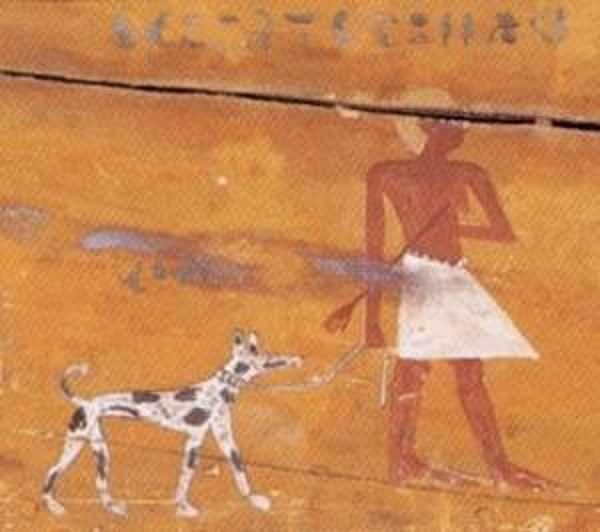


(see the "new" lop eared kind of sighthound on the right)
In truth they use scent and sound to hunt just as much as they use sight, but they do tend to share an elevated (though less elite) sprinting and coursing ability with the other more "true" sighthounds.
Breeds of this type which persist in the present day-
Ibizan Hound

Pharoah Hound

Cirneco dell'Ettna

Podenco Canario

Andalusian Hound
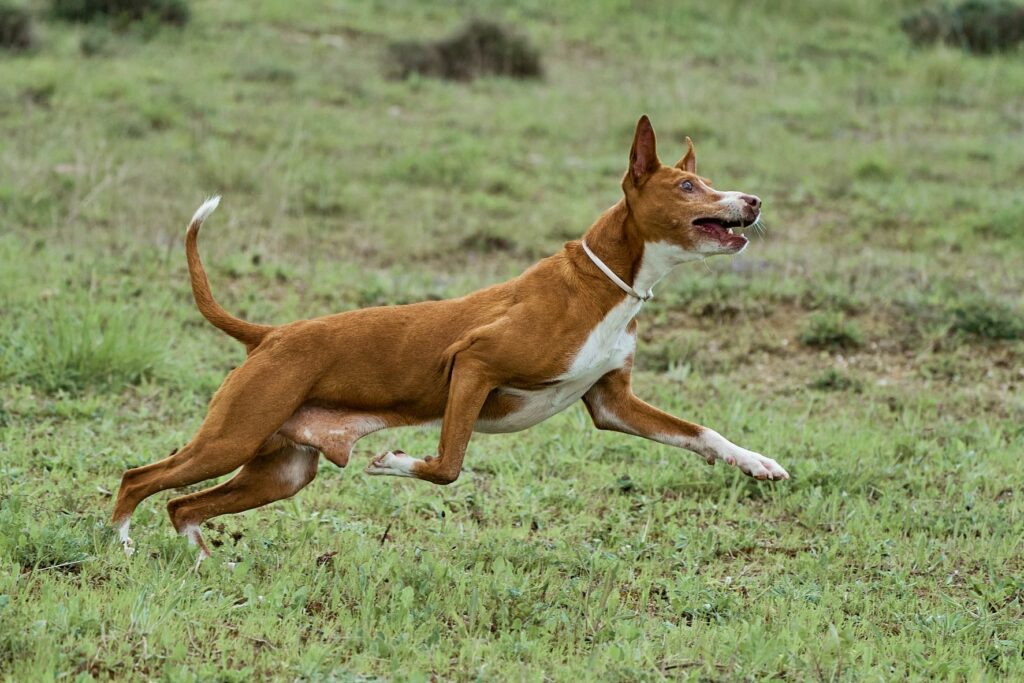
Portuguese Podengo
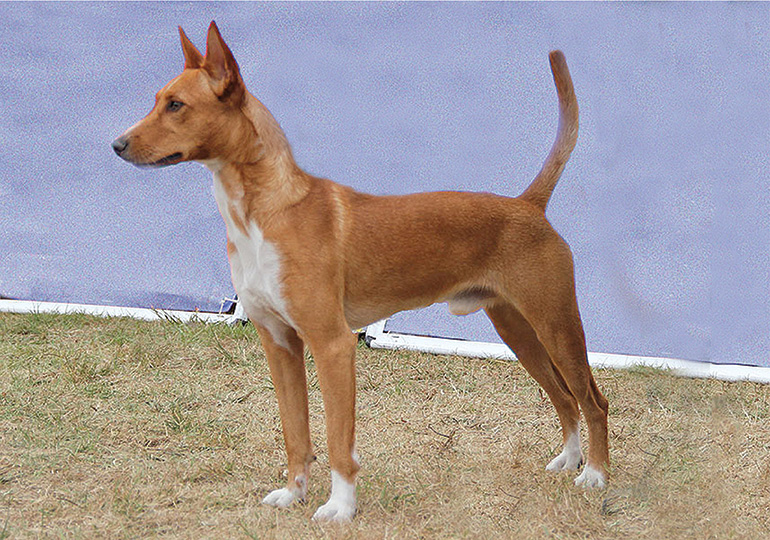
(as you can see the Portuguese seems especially "basal" and pariah like, almost like a dingo.
It is debatable whether the Basenji also belongs in this group. Genetically it is not close, but it seems likely that this group did evolve from a basenji-like ancestor very very long ago. Personally I would be ok with considering the Basenji the "grandfather" of this group. At least a spiritual predecessor, or cousin of their ancestor.
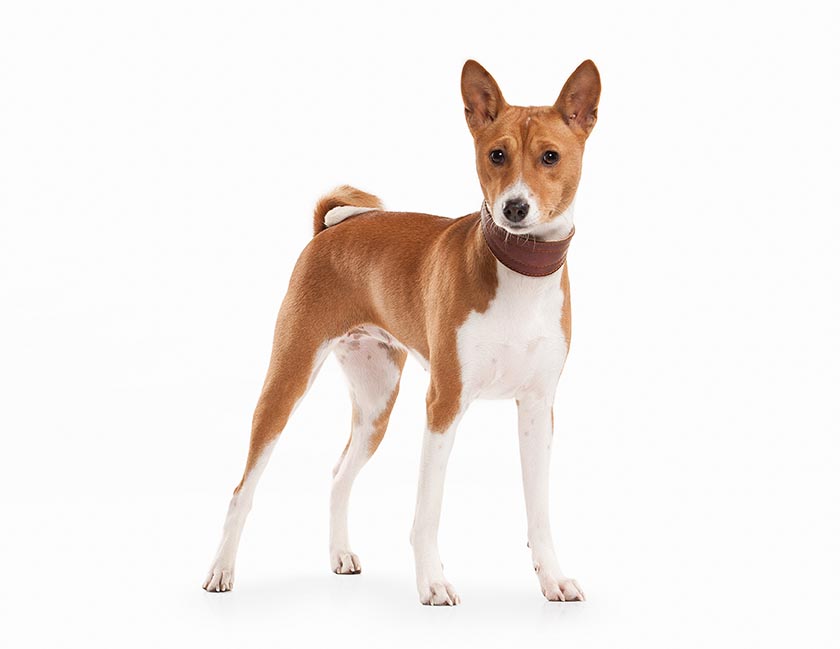
Neolithic Sighthounds
The neolithic sighthounds are also very old. This type emerged in the middle east between 9000 and 5500 years ago, likely in response to significant advancements in agriculture which allowed for elite performance hunting animals to be sustained with animal husbandry and surplus food sources, rather than merely "surviving independently" like the podencos had done.
Their geographic distribution, from North Africa through the middle east and into central and south asia, suggests they were dispersed along with the original spread of the earliest civilisations.
They are still difficult to train and difficult to live with in the modern world and when compared with modern breeds, but they clearly represent an evolution in hunting performance that was possible only after civilisation came to pass.
These ancient sighthounds had now developed lop-ears, likely in response to a reduction in needing to rely on their ears. While Podencos had needed to supplement their diet by eating rodents, lizards and birds they could hear rustling in the long grass, these sighthounds now were able to focus on "sporting" difficult prey like hares and antelopes. Humans were now getting serious about using dogs as hunting tools. Humans are almost totally vision-based predators, and seemed to favour dogs that could adapt to their vision-based hunting style. Humans adapting to the scenting prowess of dogs would come later.
Breeds of this lineage which persist in the present day -
Saluki

Afghan

Azawakh
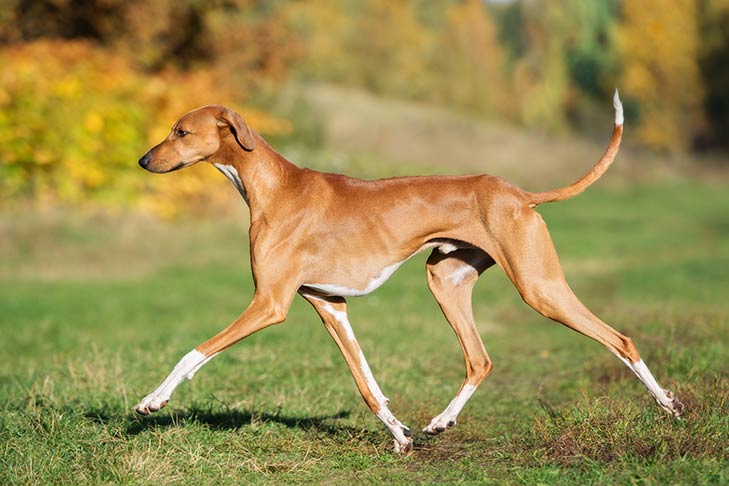
Sloughi

Levriero Meridionale

Mudhol

Tazy

Kanni/Chippiparai

Western Sighthounds
This grouping of sighthounds descend from western civilisation specifically, and share genes and temperamental characteristics as a result. They are all in truth the result of hybridisation and cutthroat performance breeding for elite hunting aptitude. The scottish deerhound is arguably the most primitive and could almost be considered a "celtic cousin" to the neolithic sighthounds. Mostly the western sighthounds descend from the celtic deerhound and hybridising the deerhound with other dogs, a practice started by the Romans around 50 BC but continued through the middle ages and played a critical role in helping western civilisation tame exotic locations around the world during the colonial era. The english greyhound became the optimal product of this endeavour and then contributed as a foundation for other dogs along the way.
Though not necessarily easy to train, this group are highly intuitive and sensitive to their owners' behavioural preferences. They share a laid back and low key demeanour that makes them very easy to own and live with (even to the point of forgetting they are there). As mentioned the deerhound has some mild relic traits which nod towards it's basal status, it is slow to mature for example and can be slightly more stubborn than the others.
Breeds from this lineage-
Scottish Deerhound
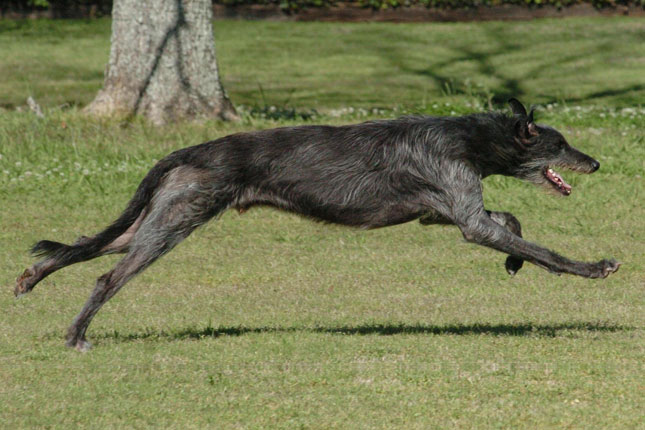
English Greyhound
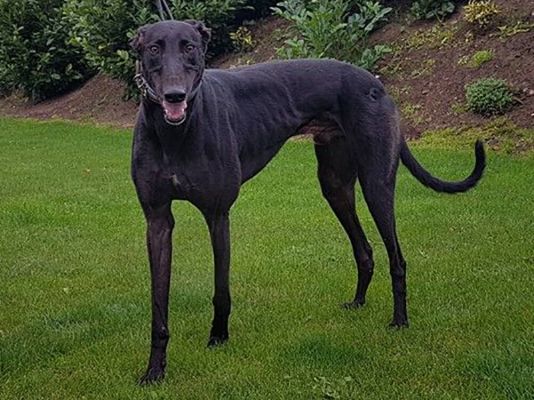
Galgo Espanol

Borzoi

Hungarian Greyhound

Polish greyhound
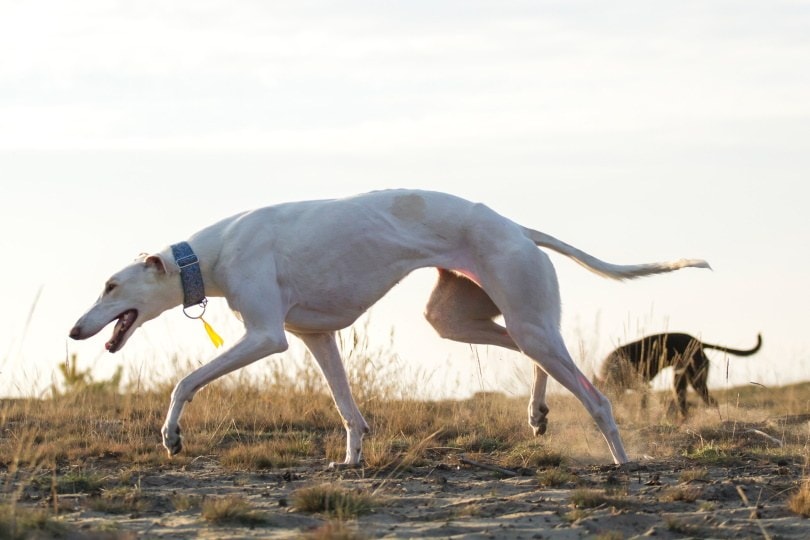
Rampur Hound

Whippet

Australian staghound/roo dog
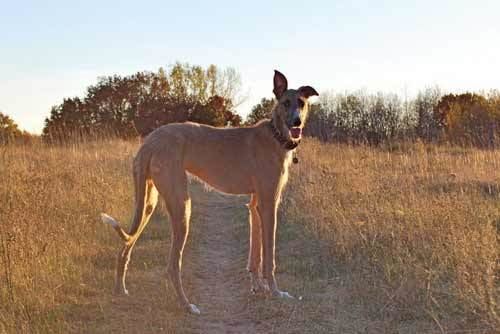
American Staghound
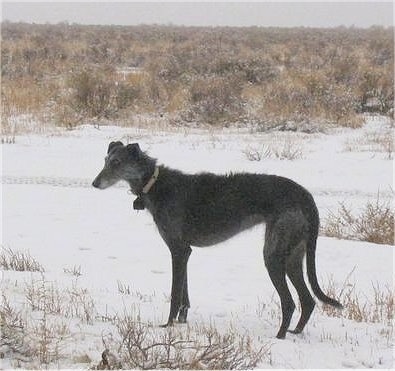
Irish Wolfhound

Galgo Patagonico

Boergreyhound

It should be noted some of these are heavily influenced by neolithic admixture, Borzoi is heavily influenced by Tazy for example, ditto for the hungarian and polish, and the Rampur have a lot of admixture with mudhol and chippiparai. The english greyhound and galgo espanol were likely mixed with sloughi and possibly saluki as some point as well. But these western breeds all are products of the western "empire" style of performance breeding.
The tradition of blending sighthounds with other dogs (whether other sighthounds or different types) in search of the optimal hunting dog continues into the present day with "lurcher and longdog" culture, the same culture that generated the latter category but also generated dogs like the great dane and dogo argentino, and today continues making performance bred hunting dogs that may not belong to any breed in particular. We see these cultures continueing to generate new sighthound mixes in places like Argentina, South Africa, Australia, the UK and some in south-western USA as well.
There are even some performance dogs made from the old podenco lineages, but using modern style breeding, like the Podenco Campanero-

The following seem to be the 3 distinctive categories.
Proto-sighthounds, aka "Podencos".
Podencos are probably the oldest type of sighthound and probably the first type of dog to exist which wasn't of the spitz/pariah type. They are basically a transitional form between pariah and sighthound, with some leaning more strongly towards pariah.
They are characterised by their distinctive erect ears and share a wild independent temperament which makes them difficult to train, or even live with. They are also all native to regions around the mediterranean, and likely arose with the earliest emergence of Ancient Aegean farmers (between 12 000 and 10 000 years ago).
Even in proto-dynastic Ancient egypt (3000 BC) this type of sighthound (known as the "Tesem") was distinguished from the "lop eared" kind of sighthound, and was even then considered "the old kind".




(see the "new" lop eared kind of sighthound on the right)
In truth they use scent and sound to hunt just as much as they use sight, but they do tend to share an elevated (though less elite) sprinting and coursing ability with the other more "true" sighthounds.
Breeds of this type which persist in the present day-
Ibizan Hound

Pharoah Hound

Cirneco dell'Ettna

Podenco Canario

Andalusian Hound

Portuguese Podengo

(as you can see the Portuguese seems especially "basal" and pariah like, almost like a dingo.
It is debatable whether the Basenji also belongs in this group. Genetically it is not close, but it seems likely that this group did evolve from a basenji-like ancestor very very long ago. Personally I would be ok with considering the Basenji the "grandfather" of this group. At least a spiritual predecessor, or cousin of their ancestor.

Neolithic Sighthounds
The neolithic sighthounds are also very old. This type emerged in the middle east between 9000 and 5500 years ago, likely in response to significant advancements in agriculture which allowed for elite performance hunting animals to be sustained with animal husbandry and surplus food sources, rather than merely "surviving independently" like the podencos had done.
Their geographic distribution, from North Africa through the middle east and into central and south asia, suggests they were dispersed along with the original spread of the earliest civilisations.
They are still difficult to train and difficult to live with in the modern world and when compared with modern breeds, but they clearly represent an evolution in hunting performance that was possible only after civilisation came to pass.
These ancient sighthounds had now developed lop-ears, likely in response to a reduction in needing to rely on their ears. While Podencos had needed to supplement their diet by eating rodents, lizards and birds they could hear rustling in the long grass, these sighthounds now were able to focus on "sporting" difficult prey like hares and antelopes. Humans were now getting serious about using dogs as hunting tools. Humans are almost totally vision-based predators, and seemed to favour dogs that could adapt to their vision-based hunting style. Humans adapting to the scenting prowess of dogs would come later.
Breeds of this lineage which persist in the present day -
Saluki

Afghan
Azawakh

Sloughi
Levriero Meridionale
Mudhol

Tazy

Kanni/Chippiparai
Western Sighthounds
This grouping of sighthounds descend from western civilisation specifically, and share genes and temperamental characteristics as a result. They are all in truth the result of hybridisation and cutthroat performance breeding for elite hunting aptitude. The scottish deerhound is arguably the most primitive and could almost be considered a "celtic cousin" to the neolithic sighthounds. Mostly the western sighthounds descend from the celtic deerhound and hybridising the deerhound with other dogs, a practice started by the Romans around 50 BC but continued through the middle ages and played a critical role in helping western civilisation tame exotic locations around the world during the colonial era. The english greyhound became the optimal product of this endeavour and then contributed as a foundation for other dogs along the way.
Though not necessarily easy to train, this group are highly intuitive and sensitive to their owners' behavioural preferences. They share a laid back and low key demeanour that makes them very easy to own and live with (even to the point of forgetting they are there). As mentioned the deerhound has some mild relic traits which nod towards it's basal status, it is slow to mature for example and can be slightly more stubborn than the others.
Breeds from this lineage-
Scottish Deerhound

English Greyhound

Galgo Espanol

Borzoi

Hungarian Greyhound
Polish greyhound

Rampur Hound

Whippet
Australian staghound/roo dog

American Staghound
Irish Wolfhound
Galgo Patagonico

Boergreyhound
It should be noted some of these are heavily influenced by neolithic admixture, Borzoi is heavily influenced by Tazy for example, ditto for the hungarian and polish, and the Rampur have a lot of admixture with mudhol and chippiparai. The english greyhound and galgo espanol were likely mixed with sloughi and possibly saluki as some point as well. But these western breeds all are products of the western "empire" style of performance breeding.
The tradition of blending sighthounds with other dogs (whether other sighthounds or different types) in search of the optimal hunting dog continues into the present day with "lurcher and longdog" culture, the same culture that generated the latter category but also generated dogs like the great dane and dogo argentino, and today continues making performance bred hunting dogs that may not belong to any breed in particular. We see these cultures continueing to generate new sighthound mixes in places like Argentina, South Africa, Australia, the UK and some in south-western USA as well.
There are even some performance dogs made from the old podenco lineages, but using modern style breeding, like the Podenco Campanero-


